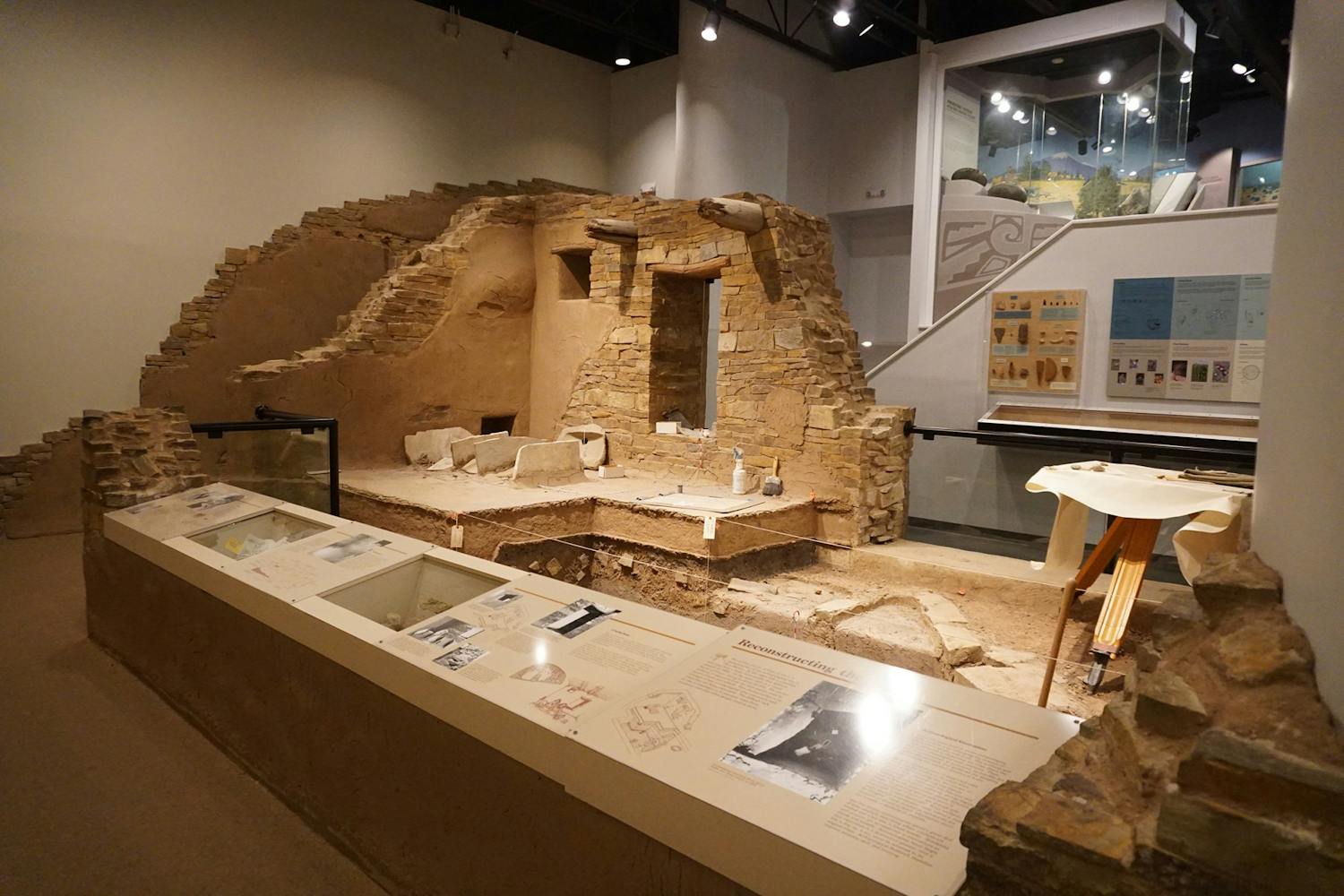The Maxwell Museum of Anthropology, located at the University of New Mexico, has seen a boost in attendance after switching to a solely online presence during the COVID-19 pandemic.
Three new virtual exhibits have been drawing in visitors: “COVID-19: Concepts of Sickness and Wellness,” “Iconoclasm: Questions of Veneration, Destruction, and Power” and “What We Do at the Maxwell Museum of Anthropology Part I: Curator Dr. Carmen Mosley.”
Carla Sinopoli, the director of the Maxwell Museum, said the COVID-19 exhibit was the biggest and most ambitious one. The exhibit explores the history of how humans deal with pandemics, with themes of sickness, wellness and healing.
Sinopoli said the idea was to “create an exhibit that would grow throughout the pandemic, that would really look at how people in other times and places confronted pandemics including, at the time, when Europeans first came to North America and introduced diseases (and) kind of decimated Native populations, or had germanic effects on Native populations.”
An addition to the exhibit called “Your Story” invites the public to write about their experiences during the pandemic and submit them to the museum for possible publication.
“Part of this is both to provide people with information and context but also for us, as a museum, to be able to help curate the history of the pandemic,” Sinopoli said.
The Iconoclasm exhibit explores the destruction of icons and monuments, and is actually an exhibit the museum displayed about three years ago, Sinopoli said, but was renewed in light of George Floyd’s murder and the toppling of racist monuments around the world.
“We took what we had done in the physical exhibit, added new content and created a very simple online exhibit,” Sinopoli said.
Sinopoli said the final online exhibit is a panel-type feature that shows the work that goes on behind the scenes with Carmen Mosley, the curator of human osteology.
According to Sinopoli, two more online exhibits are on the horizon. These will be put together by students of Devorah Romanek, curator of exhibits, from a recent class she taught at UNM on how to prepare online exhibits.
UNM President Garnett Stokes, in her Weekly Perspective newsletter from March 22, reported a 478% increase in visitors after “the team at Maxwell expanded many of its programs to virtual spaces.”
Another goal that the Maxwell Museum wants to pursue, according to Sinopoli, is to strengthen its relationship with New Mexico’s tribes and communities, since many of its exhibitions have Native American collections. The museum is already involved in repatriation of tribal remains.
Get content from The Daily Lobo delivered to your inbox
“We want that to be a collaborative process that presents the voices of Indigenous people as opposed to academics alone, espousing on the lives of other people,” Sinopoli said.
Last spring, the museum was awarded funds from the Frank C. Hibben Trust, a 501(c)(3) nonprofit, to pay for K-12 Maxwell field trip bus fees, according to Sinopoli. However, since in-person operations ceased at the start of the pandemic, the museum created two virtual field trips instead — “one focused on human evolution and the ancestors exhibition, the other on the archaeology of the U.S. Southwest and the People of the Southwest exhibition,” according to the museum’s Fall 2020 issue.
“We could actually take the students into the collections, into the labs of anthropologists and archeologists, and really get them behind the scenes in ways we can’t do physically at the museum,” Sinopoli said. “And because it’s online, it can be seen all over the state of New Mexico and all over the world.”
Maxwell was also notified this month that it had been re-accredited by the American Alliance of Museums (AAM). Sinopoli said this required a rigorous two-day review to ensure that all of the museum’s policies and exhibits are cared for to the best of the staff’s ability, ranging from climate control to square footage.
“As the museum field’s mark of distinction since 1971, accreditation offers high profile, peer-based validation of your museum’s operations and impact,” the AAM website reads. “Accreditation increases your museum’s credibility and value to funders, policy makers, insurers, community and peers. Accreditation is a powerful tool to leverage change and helps facilitate loans between institutions.”
The UNM Newsroom reported that Maxwell received its first accreditation in 1973 and was renewed in 1984, 1997 and 2006. The AAM states that the accreditation process takes eight to 16 months to complete, and that the accreditation should be renewed every ten years.
Looking to the future, Sinopoli said all museums are in the same boat as they wait to see what attendance will be like after the pandemic and when people will feel safe to be in crowds again.
Sinopoli said the best case scenario is that the museum will be able to reopen in June, but Maxwell intends to continue abiding by state and University safety standards first to ensure the wellbeing of the public and its staff.
“When museums started doing stuff online, 20 years ago or whenever it was, there was a fear that visitors would stop coming because they could see things online and what we found is, in fact, the opposite is the case,” Sinopoli said. “People see things online then they really want to come in and see the real thing. So that’s our hope.”
Megan Gleason is the culture editor at the Daily Lobo. She can be contacted at culture@dailylobo.com or on Twitter @fabflutist2716







